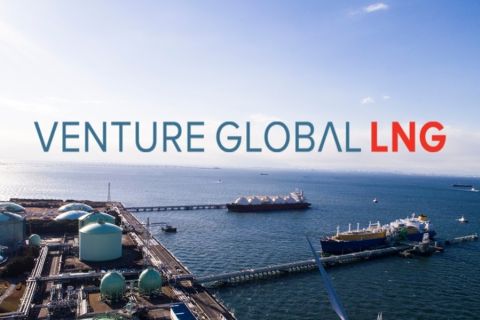Small-cap E&P-company executives who continue to be frustrated by an inability to complete acquisitions may find more success if pursuing larger deals, according to Houston-based investment-banking and M&A advisory firm Weisser, Johnson & Co. "For those seeking to acquire U.S. assets, we see better opportunity in transactions greater than $100 million," says Scott Johnson, managing director, in the firm's recent "Small Capitalization E&P Market Letter." Following are some reasons: • There is a rising prevalence of larger transactions. "While the number of smaller deals has declined, larger deals have increased in occurrence." In 2003, for example, there were 53 smaller transactions (between $10- and $100 million) and 55 in 2002, down from between 76 and 92 in each year from 1996-1999. "However, deals over $100 million have continued to climb in volume." There were between 17 and 28 of these in 1996-2001 but 31 and 35 in 2002 and 2003, respectively. • Larger transactions typically involve more resolute sellers. Many are by larger companies exiting non-strategic basins and are committed to exiting, Johnson says. They will take reasonable valuations. Meanwhile, the sellers of smaller packages are often private companies selling out, trying to capture "top of the market" valuations. "These are two very different mindsets," says Frank Weisser, also a managing director of the firm. • Larger deals tend to offer more upside. "It's worth more to acquire from a seller that couldn't give appropriate attention to an asset, rather than from a small company that has focused intently on the asset and thus more fully exploited it," says Lynn Bass, a principal in the firm. • Premiums are shrinking. Larger transactions do tend to sell for a higher premium but this premium has shrunk, as smaller transactions have become fewer and more competitive. • There are more financing options for larger deals. This can easily make up for the premium, Weisser says. "We see a vast amount of interest by financial institutions for transactions of this scale, and this means an ability to blend financial tools not available to smaller deals." The blended cost can be substantially lower than a financing for a smaller transaction, and offer more flexibility than a typical smaller deal. Where are the large divestitures likely? In New Mexico, the Gulf of Mexico and Louisiana, where companies are finding more projects to drill but aren't achieving the production they once achieved, Weisser says. The assets are becoming more labor-intensive and growth-challenged. "Wyoming, Canada and Colorado appear to respond more robustly to investment," Bass says. "In general, larger companies will be more attracted to buying reserves in these regions. Therefore, if you are building a company to sell to a large E&P company, developing an asset in Wyoming, Colorado, Montana or Canada is more likely to attract the attention of a lucrative bid." And, small producers that are looking to buy assets should consider oil-weighted properties, which are selling at lower prices than gas-weighted assets, Weisser adds. "Oil [assets are] out of favor," he says. "Considering this and the fact that oil is selling for above $35 a barrel, market valuations are issuing a strong call to 'buck the trend' and pursue oil acquisitions and drilling. The appeal is that it is a buyer's market: valuations are much lower than gas and there are fewer bidders to compete with." There is a caveat, however: "The low interest in U.S. oil-dominated projects will certainly diminish the number of potential buyers for your properties should you choose to exit through sale, assuming the sentiment for oil doesn't change," Bass says. So, if choosing to pursue an oil-heavy strategy, be prepared to hold the assets. As for raising capital to fund these oily purchases, an oil-weighted strategy may not be attractive to private equity, but mezzanine debt, the volumetric production payment (VPP) structure and other self-liquidating structures are available. And, these don't require divestiture or initial public offering as an exit, he adds. -A&D Watch
Recommended Reading
Venture Global Seeks FERC Actions on LNG Projects with Sense of Urgency
2024-02-21 - Venture Global files requests with the Federal Energy Regulatory Commission for Calcasieu Pass 1 and 2 before a potential vacancy on the commission brings approvals to a standstill.
The Problem with the Pause: US LNG Trade Gets Political
2024-02-13 - Industry leaders worry that the DOE’s suspension of approvals for LNG projects will persuade global customers to seek other suppliers, wreaking havoc on energy security.
Hirs: LNG Plan is a Global Fail
2024-03-13 - Only by expanding U.S. LNG output can we provide the certainty that customers require to build new gas power plants, says Ed Hirs.
Everywhere All at Once: Woodside CEO Touts Current Global Portfolio
2024-03-05 - Meg O’Neill, the CEO of Australian energy giant Woodside Energy, is overseeing the “next wave” of growth projects around the globe, including developments in the Gulf of Mexico, offshore Senegal and further LNG expansion.
Wanted: National Gas Strategy for Utilities, LNG
2024-02-07 - Chesapeake CEO Nick Dell’Osso and Mercator Energy President John Harpole, speaking at NAPE, said some government decision-makers have yet to catch on to changes spreading across the natural gas market.





